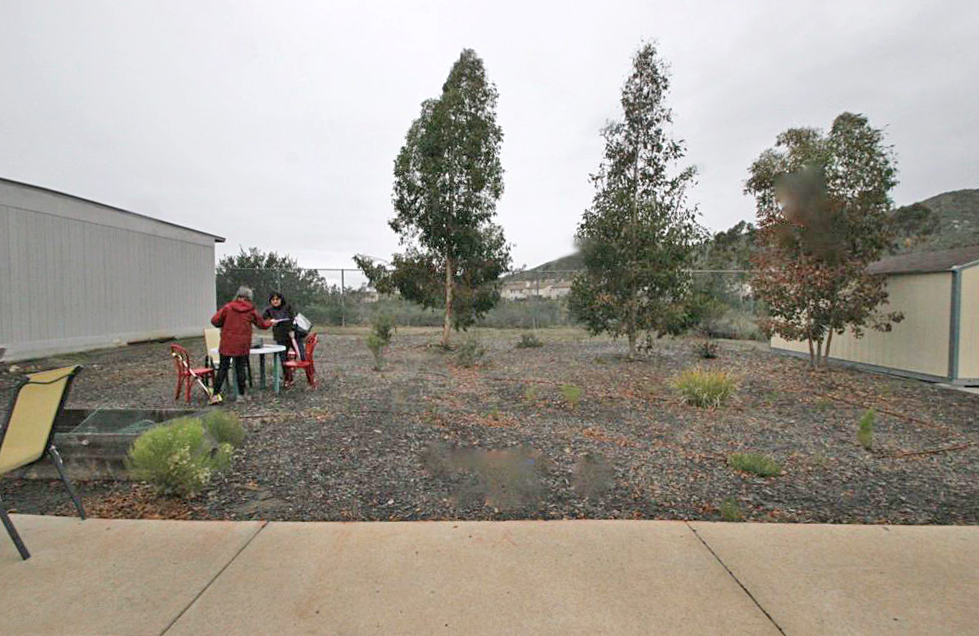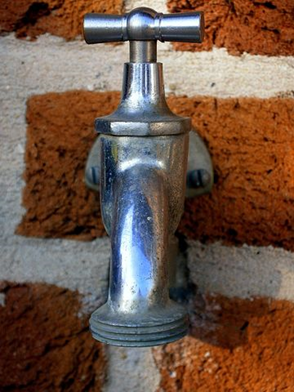Gardens are difficult to relocate once installed and a poor location can severely limit plant performance and the garden’s contribution to the learning process. The location and physical characteristics of a garden directly influence its use and success. Gardens can be built on any terrain, even a hillside. However, gardens located on level ground are less expensive and easier to install and maintain. Soil erosion can be a problem on steep terrain and low spots where water stands will not be good for either plants or people. A slight slope will allow surface water to drain away. Runoff should flow to a drainage channel or culvert.
When selecting a location, carefully consider the needs of the plants that will be grown in the garden, as well as the needs of the people who will learn and teach there. A shady area can be used for a storage shed and may provide a restful spot for outdoor classes and reading, but is a poor choice for growing most vegetables. To create a garden that will flourish, evaluate potential sites for hours of sunshine, water availability, soil, drainage, and security before deciding upon a location. Go to Resources in the School Garden section of MG website for a list of books on school gardens ideas.

Soil
Choose an uncontaminated site, avoiding areas that have been treated with persistent herbicides or with lead based paints or other toxic pollutants. A healthy crop of weeds is a good indication that cultivated plants will grow. Select a site with good quality soil to minimize the time, money and effort required to prepare for planting.
To be certain the soil in a proposed location is not contaminated, contact a local Agricultural Testing Lab (scroll down to see the map) or call the UC Cooperative Extension office in San Diego (858-822-7711) for a list of local labs. Check with the lab you intend to use to learn how to best collect the soil sample, and ask if they provide a report to help you interpret the result. Also ask if they provide recommendations on how to correct soil problems.
Drainage
The composition of the soil and its density determines how fast water enters and moves through the soil. Plant roots need both water and oxygen to flourish. Adequate watering is essential to ensure a bountiful harvest, but roots will drown if the soil is too wet for a long period. Sandy soils drain quickly and tend to dry out rapidly. Amending the soil with compost will increase water retention and using mulch will reduce water loss. Clay soils drain slowly and can deprive plants of needed oxygen. Amending clay soils with organic matter such as compost, ground bark or wood shavings will improve drainage. Soil drains better in raised beds. If native soil is terrible, consider buying a good quality soil or growing plants in large containers filled with potting mix. More detailed information about preparing the soil is included in the Enriching the Soil section.
Sunlight
Shady areas are best used for tables, seating, and storage. Lettuce and a few other cool season, leafy vegetables may grow in a shady location, but six hours of direct sunlight are necessary for growing most flowers and vegetables. If possible, monitor potential sites at different times of the day and in different seasons to determine shade patterns created by nearby trees or buildings. Remember, shadows are longer in winter than in summer.
Water and Electricity
Locate the garden as close as possible to a source of potable water. NOTE: Recycled water may NOT be used on food crops (e.g., vegetables, herbs, fruit trees, etc.) Carrying buckets or dragging a garden hose from a distant faucet is awkward and time consuming. If the garden will be irrigated with an automatic or drip system, it will still be convenient to have water nearby for washing hands, cleaning up garden tools, and occasional hand watering plants when needed.

A convenient source of electricity will provide power for electric tools and for an irrigation controller.
Security
A fence surrounding the garden will exclude unwanted wildlife, pets, balls, bicycles, and the occasional mischief-maker. A chain link or wire mesh fence provides security without blocking light or air circulation. If school policy allows, you might plant vines or hedges. It will take a long time for them to grow; they may create unwelcome shade; and their roots may compete with crops for water and nutrients.
Array